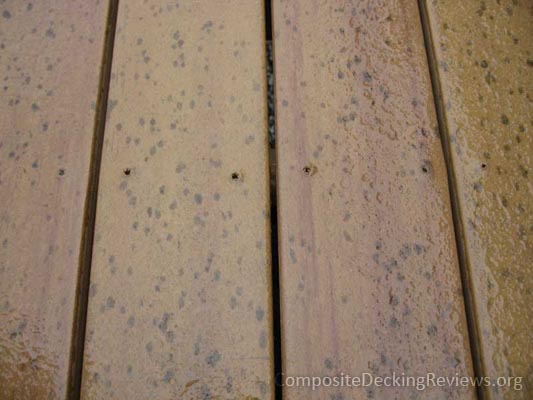When composite decking first came on the scene, this was the feature most cited by its supporters. Because of the added plastic content, synthetic decking wouldn’t inherit all the maintenance headaches caused by traditional wood material. The arguments made sense; plastic wouldn’t absorb water, wouldn’t rot, and would repel insects. Homeowners who were tired of cleaning and sealing their decks were quick to jump on board.
And then the truth reared its ugly head.
The fact of the matter: there is no such thing as a truly maintenance-free material, and composite decking, in spite of its lofty claims, turns out to require more maintenance than some wood decks.
So what happened? While it’s true that plastic is waterproof, plastic makes up only a portion of a composite deck board. The rest is wood pulp, which acts like a sponge. The end result? Mold, and lots of it.

On the plus side, the mold can be cleaned off (but wasn’t the point to not have to clean the deck?). Composite companies usually sell a special cleaner designed to handle this exact issue. These cleaners are corrosive; they definitely kill the mold, but they also eat away at the surface of the deck, allowing more water to get inside, which in turn creates a breeding ground for more mold…
Mold is just one problem composite decks face. Another is fading. Just like real wood, synthetic decking will lose its color when exposed to sunlight. The solution is the same as it is for wood: staining. Except, wasn’t composite decking supposed to liberate you from the annual hassle of deck staining?
Composite decking companies have changed their stance since the early days, opting to call their products “low-maintenance” instead of “maintenance-free”. But low-maintenance compared to what? Wood? Composite deck owners have reported similar (and sometimes increased) maintenance when compared to pressure treated pine.
Leave a Reply